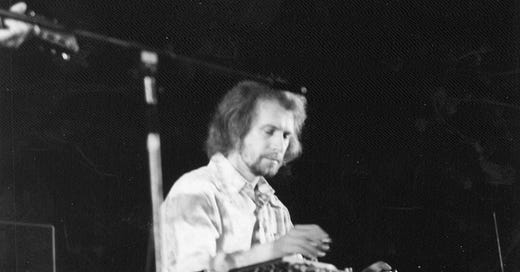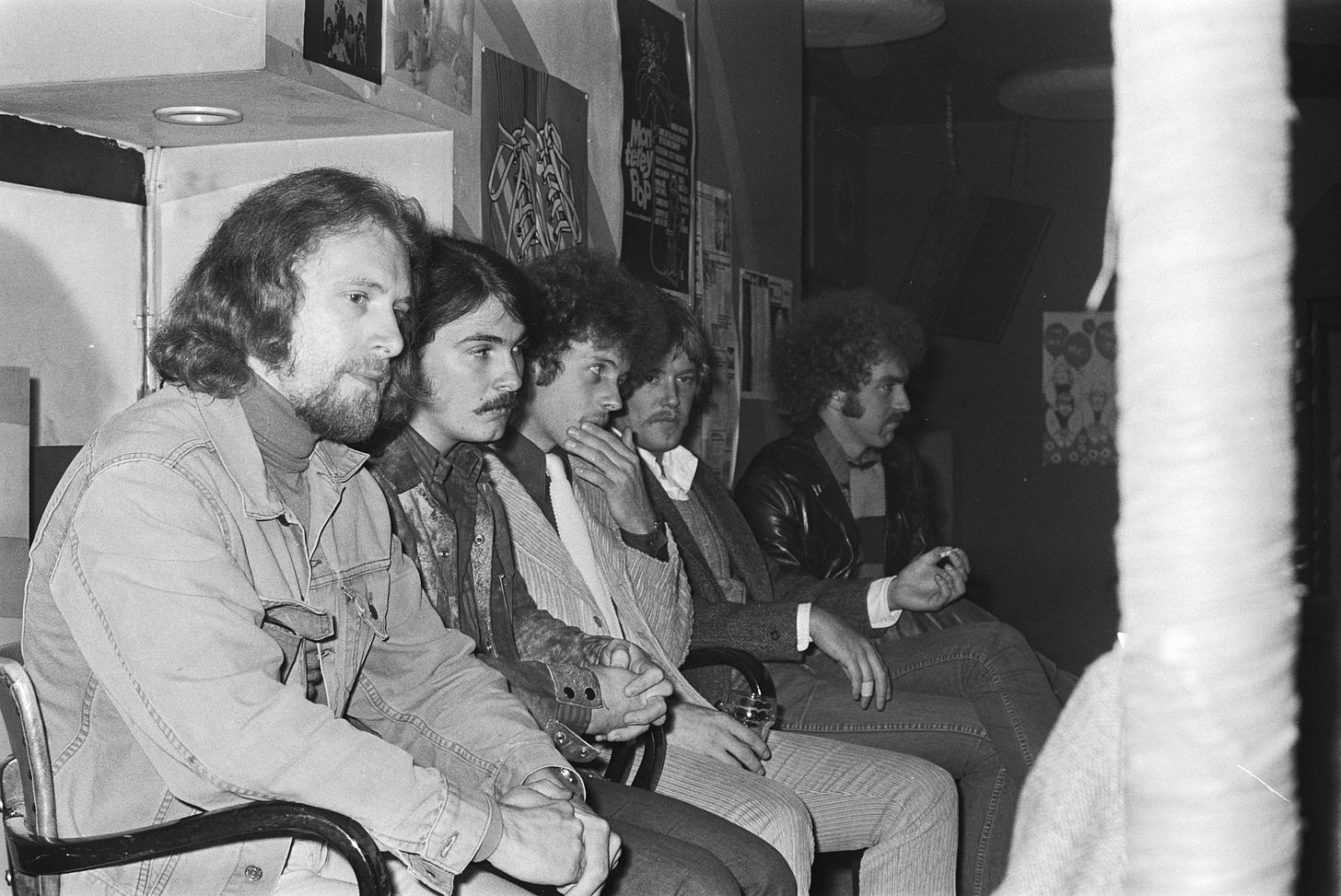(via wordpress.com)
While I usually spend time highlighting interesting, less famous women connected to showbusiness on this newsletter, this week I’m going to put the spotlight on one of the men behind the scenes who I find fascinating in a similar way. This guy is so prolific in both the film & TV industry and the music community, you could probably be aware of him in one area and not realize his connection to the other. Or alternatively, you may not even realize his participation in either field because he’s not a big name. Known professionally as both Pete Kleinow and the moniker ‘Sneaky Pete,’ Peter E. Kleinow hailed from South Bend, IN, in the 1930s to 1950s with a passion for pedal-steel guitar playing, inspired by country and Hawaiian music, particularly played by pedal-steel player Jerry Byrd. A member of the silent generation, Pete initially did the practical thing of getting a ‘real job’ outside of the arts when he moved to Lansing, MI, to work in maintenance at the Department of Transportation before moving to Los Angeles, CA, by the time he was 26 in 1960. Though one would expect Pete to leave middle America to kickstart a music career, he actually broke through with his second talent: stop-motion animation and visual effects. You know the Claymation children’s program “Gumby” that’s been running since 1953? Pete worked as an animator on Gumby himself in the early-to-mid 1960s, as well as on the animation teams for Clokey’s “Davey and Goliath” (1961-64), ABC’s “The Outer Limits” (1963-65), Harry Levin’s The Wonderful World of the Brothers Grimm (1962) and George Pal’s 7 Faces of Dr. Lao (1964). When “Davey and Goliath” was rebooted in 1972, Pete returned to the animation team and later co-won Outstanding Special Effects at the Emmys for ABC’s “The Winds of War” (1983). NBC’s “Land of the Lost” (1974-76), Irvin Kirshner’s Star Wars: Episode V—The Empire Strikes Back (1980), Joe Dante’s Gremlins (1984), James Cameron’s The Terminator (1984) and Terminator 2: Judgment Day (1991) make up some of his most famous projects as an effects animator.
(Rob Croes / Anefo)
What’s wild is that not only did Pete build a name for himself with on-screen graphics, but coined a whole second career as a pedal-steel guitarist like he always meant to. While working on “Gumby” and “D&G,” Pete played Hollywood clubs as a member of Smokey Rogers’ Western Caravan and The Detours, the latter which he would substitute for fellow pedal-steel expert Red Rhodes on his nights off. It was through these gigs Pete met former Byrds members Chris Hillman and Gram Parsons, who would offer him a spot in their new country-rock band, The Flying Burrito Brothers, in 1969; when Lloyd Green chose to continue his career as a studio session musician instead of joining. Out of the original, founding line-up of FBB, Pete was the only member to stick with the band throughout the decades. Those who know the history of country-rock [or as Gram preferred to call it, ‘cosmic American music’], know how important the first three Burrito albums are to the movement in the late 1960s/early 1970s; and a big part of their influential sound comes from Pete’s playing. As if being a full time member of a band wasn’t already a huge boost musically, Pete also made time to provide session work on some classic records as well; including Joni Mitchell’s ‘Blue’ (1971), Jackson Browne’s 1972 self-titled debut, John Lennon’s ‘Mind Games’ (1973), Minnie Riperton’s ‘Perfect Angel’ (1974), Linda Ronstadt’s ‘Heart Like a Wheel’ (1974), Fleetwood Mac’s ‘Heroes are Hard to Find’ (1974), and Leonard Cohen’s ‘Death of a Ladies’ Man’ (1977). He also recorded and released four of his own solo LPs between 1974 and 2001.
You might be wondering, how does someone with this impressive level of resume, famous friends and networking skills seem to be so overlooked? Well, it’s actually not that surprising when you consider a few things. Most average music listeners don’t really pay much attention to who’s playing on the records if they aren’t also performing on stage, plus the Burrito Bros lack of proper exposure during their initial run didn’t make them stick out. And despite having such a great rep in the special effects medium, a lot of Pete’s efforts actually went uncredited and he was just paid upfront. Maybe because of his dedication to multiple crafts, Pete didn’t seem to be much into groupies or casual dating while playing in FBB, and was married to the same woman, Ernestine, his whole career and raised five children with her. Sadly, another reason Pete doesn’t get a ton of attention publicly is because he died of Alzheimer’s in 2007 at age 72 after spending his later years a victim of the disease. But his story is another example of how many important and impactful people in entertainment history are away from the limelight.





